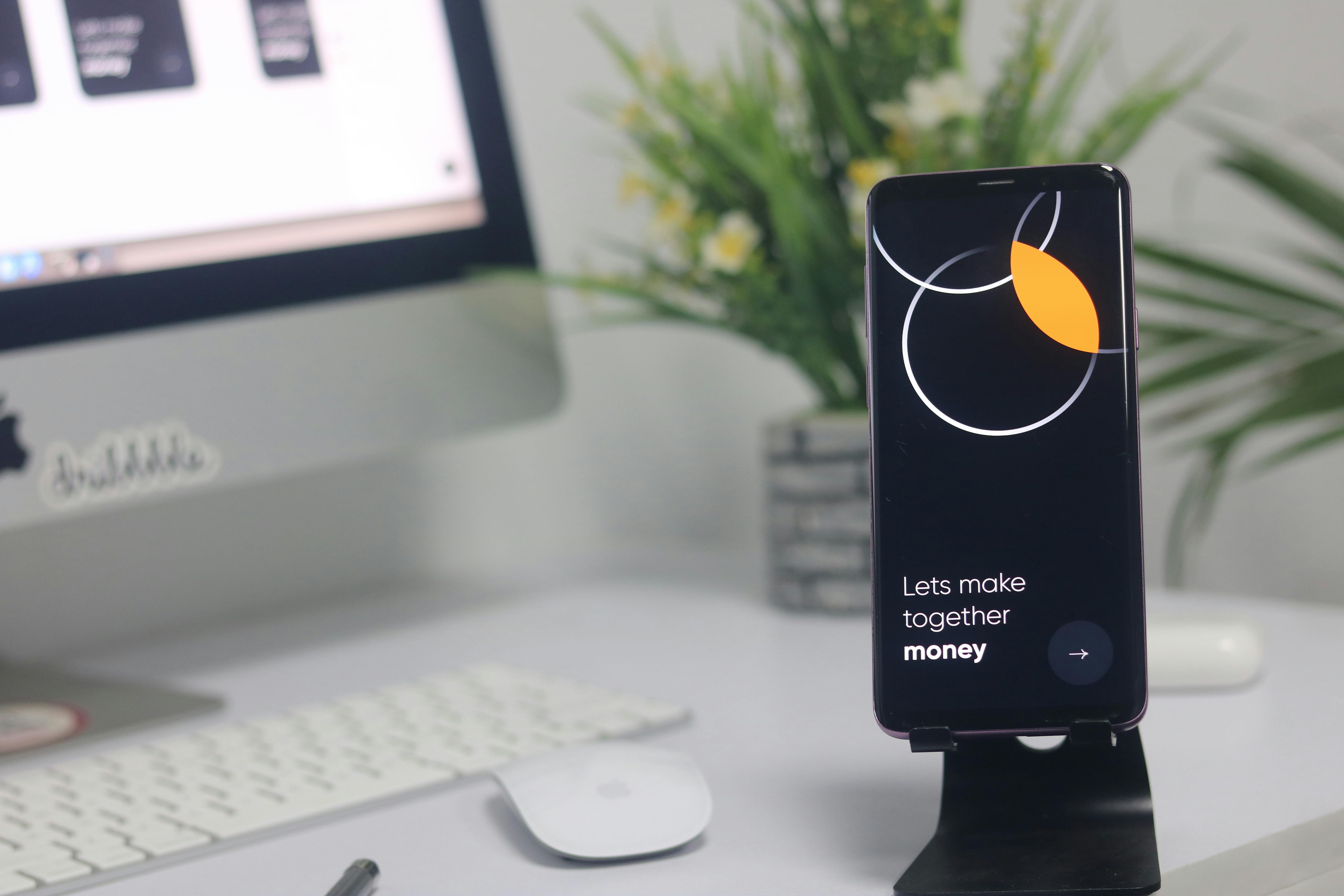What is Data in Mobile Phone: Understanding its Role and Importance
Mobile phones have transcended their basic role of communication, evolving into dynamic repositories of data. The term 'data' in the context of mobile phones encompasses a broad spectrum, from personal information to multimedia content, application specifics, and system configurations. This data not only defines our digital identity but also influences how we interact with the world around us.
Understanding mobile data is important in shaping user experience. Every action on a mobile phone, whether it's sending a message, taking a photo, or using a GPS for navigation, generates and utilizes data. This data, stored either on the device or in the cloud, forms the backbone of personalized services and functionalities that modern smartphones offer.
The significance of mobile data extends beyond individual use. For businesses, it represents a goldmine of consumer insights, enabling targeted marketing strategies and customer engagement models. In the realm of security, the protection of mobile data is paramount, as it contains sensitive personal information.
However, with great utility comes the responsibility of managing and safeguarding this data. Issues surrounding data privacy, security breaches, and data management are more relevant than ever.
In this comprehensive guide, we look into data in mobile phones, exploring its types, usage, storage, security, and much more, to provide a clear understanding of its role and importance in our daily lives.
Types of Data Stored on Mobile Phones

Mobile phones today are not just communication devices; they are personal digital archives where various types of data are stored.
- Personal Information: At the core of mobile data is personal information. This includes contacts, text messages, emails, and calendar events. Such data is fundamental for day-to-day communication and organization. Contacts serve as a digital Rolodex, storing numbers, emails, and addresses. Text messages and emails chronicle personal and professional exchanges, while calendar events keep track of appointments and reminders. This data, while seemingly mundane, is crucial for maintaining our social and professional lives.
- Multimedia Files: One of the most space-consuming data types on mobile phones is multimedia content. This encompasses photos, videos, and music. With the advent of high-quality cameras on smartphones, the quantity and quality of photos and videos stored have exponentially increased. These files not only serve as personal memories but also as a means of creative expression. Music files and playlists, meanwhile, reflect personal tastes and are essential for entertainment.
- Application Data: Every application installed on a mobile phone generates its own set of data. This includes app settings, preferences, saved games, and other information that enables a personalized and continuous experience. For instance, a gaming app might store level progress, while a shopping app might keep track of past purchases and preferences.
- System Data: Which includes operating system settings, system logs, and other background information that ensures the smooth functioning of the phone. This data is often invisible to the average user but is integral to the device's performance and stability.
The data stored on mobile phones is diverse, ranging from deeply personal to purely technical. Each type plays a unique role in the functionality of the phone and the user experience it provides. As we become increasingly reliant on mobile phones, understanding these types can help users manage their data effectively and recognize the importance of data security.
How Mobile Phones Use Data

Understanding how mobile phones utilize data can help users appreciate the sophistication of these devices and manage their data more effectively.
- Communication: The primary function of mobile phones remains communication, and this is where a significant portion of data usage occurs. Voice calls, while not heavily data-intensive, have evolved with technologies like VoLTE (Voice over LTE) that utilize data networks. Text messaging has largely been supplanted by instant messaging apps like WhatsApp and Telegram, which use data for sending messages, images, and videos. Emails, another vital communication tool, also rely on data for sending and receiving messages and attachments.
- Internet Browsing and Online Services: Web browsing is a major data consumer on mobile phones. Every web page visited, video streamed, or item downloaded uses data. Social media apps like Facebook, Instagram, and Twitter constantly use data to update feeds, upload photos, and stream videos. Online services such as banking, shopping, and navigation also require data to function, fetching information from the internet to provide real-time services.
- GPS and Location Services: Modern mobile phones come equipped with GPS capabilities, using data to offer location-based services. This includes navigation apps like Google Maps, which provide real-time directions and traffic updates, and location-based recommendations and advertising that use your geographic position to offer relevant content.
- Mobile Applications and Their Data Usage: Mobile apps, depending on their nature, can use varying amounts of data. Streaming services like Netflix and Spotify are heavy data users, especially at high quality. Gaming apps, particularly those with online multiplayer features, also consume significant data. Productivity apps, in contrast, might use data moderately for syncing documents and settings across devices.
Understanding how mobile phones use data is key to managing data consumption and costs. By being aware of which activities consume the most data, users can make informed decisions about their usage patterns and choose data plans that best suit their needs.
Data Storage: Internal vs. Cloud

The way data is stored on mobile phones has evolved significantly. Today, there are two primary storage options: internal storage and cloud storage. Each comes with its own set of benefits and risks, making the choice between them crucial based on user needs and preferences.
Internal storage refers to the physical memory built into the phone. Modern smartphones come with varying capacities, ranging from 32GB to 512GB or more. This type of storage is ideal for immediate, offline access to data. It's fast and doesn't require an internet connection. For sensitive data, internal storage can be more secure, as it's only accessible through the device itself, unless compromised. However, the main limitation is space. Once the internal memory is full, users must delete files or transfer them to free up space. Additionally, if the device is damaged or lost, the data stored internally might be irretrievable.
Cloud storage, on the other hand, involves storing data on remote servers accessed via the internet. Services like Google Drive, iCloud, and Dropbox have made cloud storage highly accessible. The primary advantage is the ability to store large amounts of data without worrying about physical storage limitations. It also allows easy access from any device with internet connectivity and facilitates easy sharing of files. However, cloud storage requires a continuous internet connection and can be slower to access compared to internal storage. Security and privacy are also potential concerns, as data is stored on third-party servers, making it imperative to trust the cloud service provider's security measures.
Both internal and cloud storage have distinct advantages and drawbacks. Users should consider their storage needs, convenience, security concerns, and access requirements when deciding which option to use for their mobile data.
Data Security and Privacy

Modern smartphones are equipped with robust security features designed to protect user data. Encryption is a standard feature that encodes data, making it inaccessible to anyone without the proper credentials. This, combined with biometric security measures like fingerprint and facial recognition, provides a strong defense against unauthorized access. Regular software updates also play a critical role in security, as they often include patches for any identified vulnerabilities.
Privacy management on mobile phones has become more user-friendly. Operating systems provide clear settings that allow users to control what data is shared and with whom. For instance, app permissions can be easily reviewed and adjusted to ensure that only necessary data is accessed by apps. This empowers users to take charge of their privacy.
Users can take simple yet effective steps to enhance their data security and privacy. Using secure Wi-Fi connections and being mindful of the apps they download are good practices. Additionally, leveraging cloud services with strong security protocols for data backup ensures that personal information is safe and recoverable in case of device loss or damage.
The Role of Mobile Data in Business and Marketing

A key application of mobile data is in targeted advertising. By analyzing browsing history, app usage, and location data, advertisers can create personalized ads that are more likely to appeal to individual users. This tailored approach not only increases the success of advertising campaigns but also improves the overall user experience by presenting content that is relevant and engaging.
Beyond advertising, the analytics derived from mobile data are crucial in various business aspects. For example, app developers can use data on user engagement to refine their products, while retailers can analyze location data to optimize store layouts and product placements. In service industries, insights from mobile data can help tailor customer service strategies and product offerings to better meet consumer needs.
The real-time nature of mobile data has also shifted consumer expectations. Today’s consumers anticipate personalized experiences and immediate responses, whether it’s in shopping, content consumption, or customer service. Businesses that adeptly harness and analyze mobile data are better positioned to fulfill these expectations, thereby building stronger customer relationships and fostering brand loyalty.
Managing and Optimizing Mobile Data Usage

Here are some strategies and tools that can help you efficiently manage and optimizing your mobile data usage:
Monitor Data Usage Regularly:
- Utilize built-in features in smartphones to check data usage.
- Identify apps that consume the most data.
- Set data limits and alerts to avoid overuse.
Clear App Cache Periodically:
- Cache files can accumulate and take up space, impacting data usage.
- Regular clearing can free up memory and reduce the need for re-downloading data.
Manage App Permissions and Background Data:
- Adjust settings to restrict background data for specific apps.
- Prevent unnecessary data usage by apps when not actively in use.
Prioritize Wi-Fi for High-Data Activities:
- Use Wi-Fi connections for downloading large files, streaming videos, or app updates.
- Reserve mobile data for basic browsing and communication.
Use Data-Saving Tools and Browsers:
- Opt for browsers with a data-saving mode to compress web pages.
- Consider lite versions of apps designed for minimal data consumption.
Implementing these strategies can lead to more efficient data usage, helping users to stay within their data plans and maintain optimal device performance.
Frequently Asked Questions (FAQs)
How do data plans work with mobile phones?
Data plans are provided by mobile carriers and offer a certain amount of data that can be used for internet activities. Plans vary in size and cost, and when the allotted data is exceeded, additional charges may apply or speeds may be reduced.
Can mobile data be used internationally?
Yes, but it often incurs additional charges known as roaming fees unless your plan specifically includes international data usage.
How does mobile data affect smartphone battery life?
Mobile data usage can impact battery life. Activities like streaming, using GPS, or browsing can drain the battery faster. To conserve battery, you can use Wi-Fi when available, enable battery saver modes, and close apps running in the background.
Can I set limits on mobile data usage to avoid overage charges?
Yes, most smartphones allow you to set data usage limits. You can configure these settings to alert you when you're nearing your data limit or to automatically disable mobile data usage once the limit is reached. This feature helps in managing your data plan effectively and avoiding unexpected charges.
Conclusion: What is Data in Mobile Phone

As we look ahead, the role of mobile data is set to become even more integral in our lives. Emerging technologies like 5G networks promise faster speeds and more reliable connections, enhancing the capabilities of mobile devices. The integration of artificial intelligence (AI) in mobile applications is expected to offer more personalized and efficient user experiences. Additionally, advancements in data security and privacy will continue to evolve, providing users with greater confidence in managing their digital footprint. In conclusion, the future of mobile data holds exciting possibilities, promising to further transform how we interact with the world through our mobile devices.
Stay ahead in the ever-evolving world of mobile data with our International Data SIM card, your ideal solution for seamless and secure connectivity on the go.
Further Reading
- "Americans’ Use of Mobile Technology and Home Broadband" from Pew Research Center: This report provides a comprehensive view of how mobile technology and home broadband usage have evolved in the United States, highlighting the digital divide and usage trends among different demographic groups. It's an excellent resource for understanding the broader context of mobile technology usage. Pew Research Center
- ScienceDaily's "Mobile Computing Technology" section: This resource offers a range of articles on the latest developments in mobile computing technology. Topics include advancements in Bluetooth technology, tackling the increasing demands of the Internet of Things on mobile networks, and innovations in AI voice interaction. These articles are ideal for keeping up-to-date with the cutting-edge technologies in the mobile data realm. ScienceDaily






